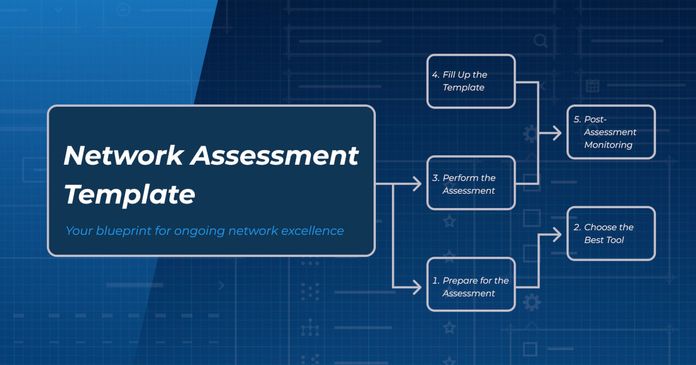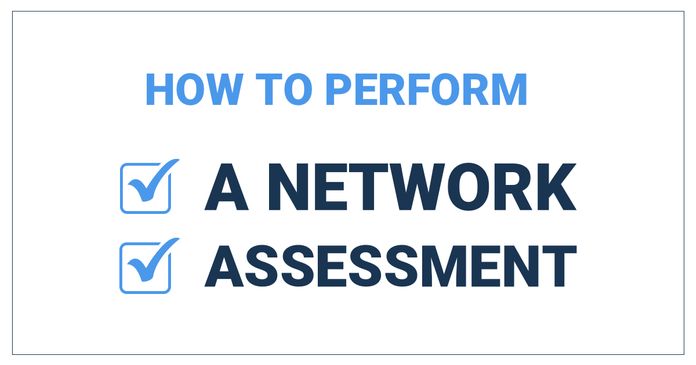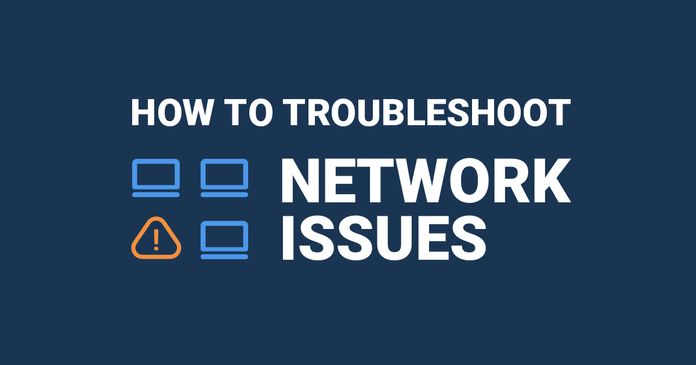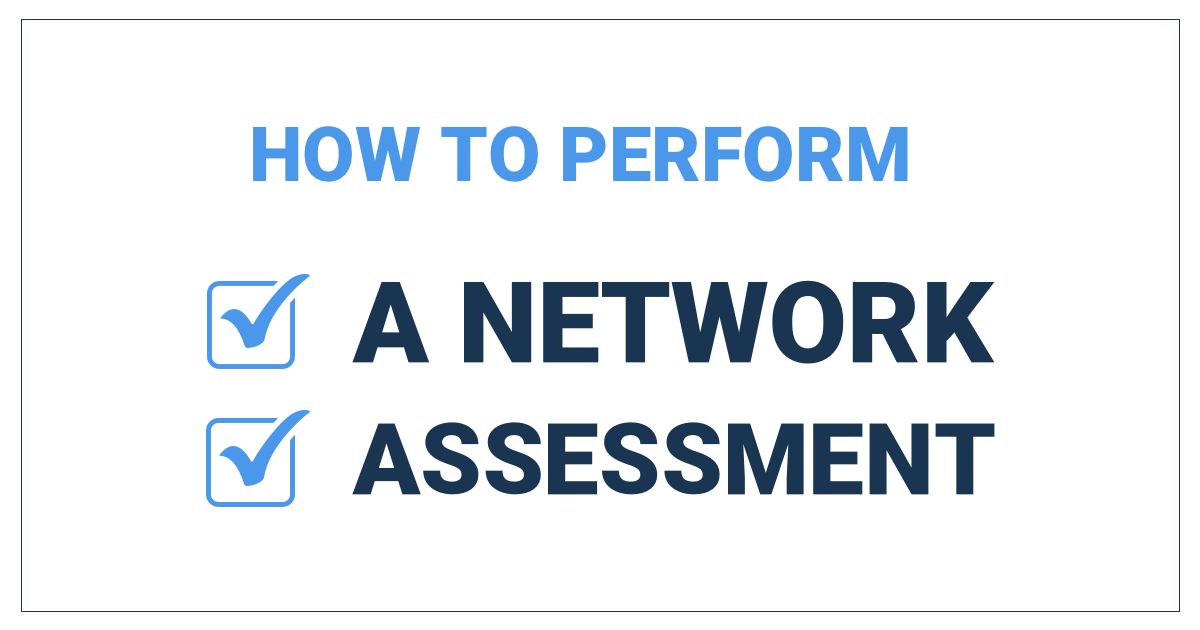Table of Contents
Table of Contents
Deploying or migrating to a new service infrastructure within your business is always an exciting, but highly stressful venture. In order for a new service deployment or migration to be successful, businesses need to plan and prepare beforehand. A network assessment is the surest and easiest way for businesses to prepare their network for a deployment or migration without any hiccups.
In this article, we’re running you through everything you need to know about network assessments, including what it entails, and how a network assessment can help you ensure a successful IT migration or service deployment!
Let’s start with the basics.
A network assessment is an in-depth analysis of your current network infrastructure to provide you with comprehensive data about your network’s health, including current issues, and any signs of network degradation.
The purpose of a network assessment is to pinpoint current network issues, identify opportunities for improvement and get a 360-degree view of your network’s performance and health to help you make more informed and strategic business decisions.
Some of those decisions can include the choice to migrate to a new network infrastructure, like:
- Migrating from an MPLS network to an SD-WAN network
- Migrating from an on-premise ERP to a cloud-based ERP
- Deploying a new service, like a hosted VoIP service
- Implementing a SASE architecture
- And much more!
Whether you're contemplating a major network migration, deploying new services, or configuring intricate changes, embarking on these endeavors without a clear understanding of your current network state can be akin to sailing uncharted waters. To prepare your business for a seamless migration or service deployment the first time around, businesses and their IT teams need to conduct a network assessment to determine the capacity of their company’s Wide Area Network (WAN) infrastructure to support the new changes.
A network assessment is among the most important network performance monitoring uses, along with network troubleshooting, and continuous network monitoring. It is used to qualify your network before the deployment of a new solution to identify issues with your LAN, WAN, firewalls, or Internet access as early as possible.
A network assessment is only one part of a larger topic, which is network performance monitoring. Network performance monitoring is the analysis and review of collective network metrics to define the quality of services offered by the underlying network, primarily measured from an end-user perspective.
Understand Current Network State: A network assessment provides an in-depth understanding of your existing network infrastructure, including its strengths, weaknesses, and performance metrics. This baseline knowledge is essential for making informed decisions about changes or upgrades.
Identify Bottlenecks and Performance Issues: Assessments help pinpoint bottlenecks, latency issues, and areas of poor performance. This information is crucial for optimizing the network to ensure that it can handle the increased demands associated with new configurations, migrations, or service deployments.
Determine Resource Utilization: Understanding how network resources are currently utilized allows for efficient allocation during and after the deployment. This helps prevent overprovisioning or underprovisioning, ensuring optimal resource usage.
Scalability Planning: By assessing the current network's capacity and capabilities, businesses can plan for scalability to accommodate future growth. This is particularly important when deploying new services or undergoing significant changes.
Security Assessment: Network assessments uncover security vulnerabilities and weaknesses. This is critical before major changes to ensure that the network is secure and that potential risks are identified and mitigated before they can be exploited.
Regulatory Compliance: Assessments help ensure that the network complies with regulatory requirements. This is especially important when deploying new services or configurations that may impact data handling and privacy.
Avoid Unplanned Downtime: Without a proper assessment, there's a higher risk of encountering unforeseen issues during major changes, leading to unplanned downtime. Identifying potential problems in advance allows for proactive resolution.
Optimize for New Technologies: When deploying new technologies or configurations, an assessment ensures that the existing network is compatible and can be optimized to take full advantage of the new features or services.
Cost Management: Understanding the current state of the network helps in effective cost management. It prevents unnecessary expenses associated with overprovisioning and ensures that the budget aligns with the requirements of the new configurations or deployments.
User Experience and Productivity: Assessing the network's performance ensures a positive user experience. Optimizing the network based on assessment results enhances productivity by minimizing disruptions and delays.
Documentation and Reporting: The documentation generated during a network assessment serves as a reference for future troubleshooting and optimization. It provides a clear snapshot of the network's state before major changes.
Risk Mitigation: Assessments help identify potential risks and challenges, allowing businesses to develop mitigation strategies. This proactive approach minimizes the likelihood of issues arising during or after the deployment.
In essence, network assessments act as a proactive and strategic step to ensure the success of major changes to the network. They provide the necessary insights to make informed decisions, optimize performance, enhance security, and set the stage for a smooth transition during configurations, migrations, or service deployments.
Performing a comprehensive network assessment is the first step towards a seamless and efficient IT infrastructure. Unlock the full potential of your network with Obkio's Network Performance Monitoring tool. Whether you're considering a migration, deployment, or simply want to ensure optimal performance, Obkio has you covered.
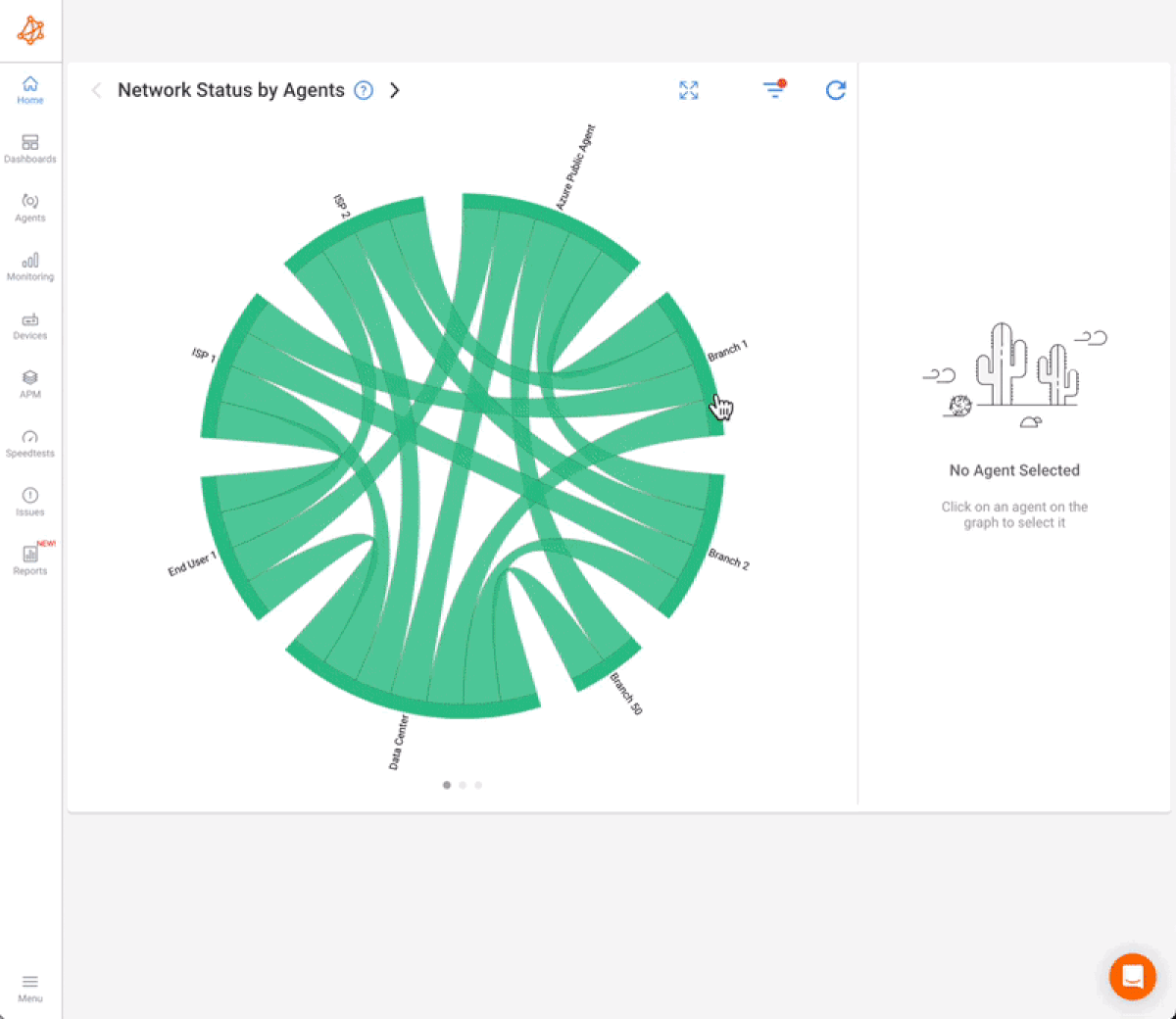
Why Choose Obkio?
Real-Time Visibility: Gain insights into your network's performance with real-time monitoring and proactive issue detection.
End-to-End Analysis: Identify bottlenecks, latency issues, and performance gaps across your entire network infrastructure.
User-Friendly Interface: Easily navigate through intuitive dashboards and reports for quick and informed decision-making.
Scalability and Flexibility: Adapt to your network's evolving needs with a tool designed for scalability and flexibility.
How Obkio Can Help You:
- Network Health Check: Get a detailed analysis of your network's health, identifying potential areas for improvement.
- Performance Benchmarking: Compare your network's performance against industry standards and optimize accordingly.
- Security Assessment: Ensure the security of your network with Obkio's monitoring capabilities and security-focused insights.
Take control of your network's performance today! Sign up for Obkio and experience the power of proactive network monitoring.
Don't let network issues hinder your success. Choose Obkio and elevate your network performance.

Earlier, we talked about the importance of performing a network assessment before a major service migration or deployment. So if you're planning to undergo any of these, listen up!
In each of these cases, a thorough network assessment becomes a critical precursor to making informed decisions. The assessment helps in understanding the current network's strengths and weaknesses, ensuring a smoother transition and successful implementation of the chosen infrastructure or service. Let's dive in:
MPLS (Multiprotocol Label Switching) is a traditional networking technology used for connecting branch offices. SD-WAN (Software-Defined Wide Area Network) represents a more modern approach that leverages software-defined networking to optimize and manage the distribution of data traffic across a wide area network.
The decision to migrate to SD-WAN can lead to cost savings, improved performance, and greater adaptability to the evolving needs of a network infrastructure.
Why Perform a Network Assessment Before:
- Current Network Analysis: Understand the strengths and limitations of the existing MPLS network, identifying potential bottlenecks or performance issues.
- Traffic Patterns: Analyze current data traffic patterns to determine how applications and services are utilizing the network.
- Readiness for SD-WAN: Evaluate the existing network's compatibility with SD-WAN requirements and assess the potential benefits and challenges.
- Informed Decision-Making: Provides insights into the current state of the MPLS network, helping in deciding whether a transition to SD-WAN is suitable.
- Performance Optimization: Identifies areas for improvement, allowing for optimization before the migration.
Enterprise Resource Planning (ERP) systems facilitate business process management and integration. The choice between on-premise and cloud-based ERP solutions involves significant considerations.
Migrating to a cloud-based ERP can lead to improved efficiency, cost savings, and increased agility in adapting to business changes. Among modern cloud options, S/4HANA Public Cloud stands out for enabling streamlined processes and faster adaptability in dynamic business environments.
Why Perform a Network Assessment Before:
- Bandwidth Analysis: Assess the network's capacity to handle increased data traffic associated with cloud-based ERP usage.
- Latency Considerations: Examine network latency, crucial for real-time data access and interactions.
- Security Review: Evaluate existing security measures to ensure the network can support cloud-based services securely.
- Bandwidth Planning: Helps in determining if the current network can provide the required bandwidth for seamless cloud ERP operation.
- Security Enhancement: Allows for necessary security adjustments to ensure a secure transition to the cloud.
Voice over Internet Protocol (VoIP) allows voice communication over the internet. Hosted VoIP services involve outsourcing the infrastructure and maintenance to a third-party provider.
Deploying a hosted VoIP service can result in cost savings, improved communication features, and scalability benefits for growing businesses.
Why Perform a Network Assessment:
- Quality of Service (QoS) Assessment: Evaluate the network's ability to prioritize VoIP traffic for optimal call quality.
- Network Reliability: Ensure the network's reliability for uninterrupted voice communication.
- Scalability Analysis: Assess scalability to accommodate the additional load introduced by VoIP traffic.
- QoS Assurance: Ensures the network can provide the necessary QoS for a smooth VoIP deployment. Scalability Planning: Helps in preparing the network for the increased demand associated with hosted VoIP services.
Secure Access Service Edge (SASE) combines network security functions with WAN capabilities to support the dynamic and secure access needs of organizations.
Implementing a SASE architecture enhances network security, provides flexibility, and aligns with modern, cloud-centric IT strategies.
Why Perform a Network Assessment Before:
- Security Posture Review: Evaluate the current security measures to identify potential vulnerabilities.
- Cloud Readiness: Assess the network's readiness to support a cloud-centric security architecture. Remote Access Analysis: Understand the capabilities for secure remote access, a key component of SASE networks. Enhanced Security: Identifies and addresses security gaps, ensuring a robust foundation for SASE implementation. Cloud Integration: Helps in preparing the network for seamless integration with cloud-based security services (like those offered by MSSPs)
Unlock the power of network assessment with our step-by-step network assessment template. Follow this ultimate blueprint for ongoing network excellence.
Learn more

In the dynamic landscape of IT infrastructure, a thorough understanding of your network's intricacies is paramount for success. So, let's delve into the fundamental elements that form the backbone of any robust network. This section provides an insightful overview of the essential components to evaluate, including network infrastructure, hardware, software, and security considerations.
By comprehensively examining these elements, organizations can uncover critical insights into their network's health, efficiency, and security posture. Whether preparing for a migration, deployment, or simply optimizing existing systems, this exploration sets the stage for informed decision-making, ensuring that your network is not only resilient but primed for future challenges.
1. Network Infrastructure:
Refers to the entire framework of hardware and software components that enable network connectivity and communication. Evaluate the current state of routers, switches, servers, and other devices. Understand the network topology and its ability to handle data traffic.
- Ensures that the network architecture aligns with business requirements.
- Identifies any potential bottlenecks or points of failure in the infrastructure.
2. Hardware:
Physical devices used in the network, including servers, routers, switches, firewalls, and other equipment. Examine the health, capacity, and performance of hardware components. Identify any outdated or underperforming hardware that may impact network efficiency.
- Helps in determining the capacity and capability of the hardware.
- Ensures that hardware components are functioning optimally for efficient data transmission.
3. Software:
Refers to the operating systems, network protocols, and applications that run on network devices. Evaluate the versions, configurations, and compatibility of software components. Ensure that software updates are current and that there are no vulnerabilities.
- Ensures that software components are up-to-date and compatible.
- Identifies any software-related issues that might impact network performance.
4. Security Considerations:
Involves assessing the overall security posture of the network, including measures to protect against unauthorized access, data breaches, and other cyber threats. Identify and address potential security vulnerabilities. Evaluate the effectiveness of security protocols, encryption, access controls, and other protective measures.
- Mitigates potential risks and vulnerabilities.
- Ensures compliance with security policies and protects sensitive data.

In the "Pre-Assessment Preparation" phase, we lay the groundwork for a successful network assessment by gathering essential information and fostering collaboration with key stakeholders. This strategic preparation ensures that the upcoming assessment is not only efficient but also tailored to the unique needs and objectives of your organization.
Preparing and planning for the network assessment before you begin will give you a direction, objective, and gameplan that will reduce the time it takes you to perform the network assessment in the long run.
When you’re planning for your network assessment, you’ll want to think about:
Objective:
Why do you want to perform a network assessment? Are you looking to get to the bottom of an intermittent network problem that’s disrupting network performance? You may be looking for ways to optimize network performance, or you may just be performing an overall health check to assess the status of your network and make proactive decisions before anything goes wrong.
- Expectations:
Following the first step, think about what you want out of this assessment. Are you looking for a detailed report of the current state of all your network metrics, maybe you want to put together a list of recommendations, or you may want to pinpoint the cause and source of a mysterious network problem.
- Method:
Finally, think about how you’ll be performing your network assessment. Analyzing every aspect of your business manually can be extremely time-consuming and difficult. Luckily, there’s a variety of different software on the market that will perform a network assessment for you - so you’ll want to consider all your options beforehand.

Before embarking on a network assessment, thorough preparation involves collecting essential information that forms the foundation of the evaluation process. This includes:
Network Documentation: A comprehensive understanding of the existing network infrastructure.
- Gather network diagrams, including topology maps and architecture layouts.
- Document IP addresses, subnets, and any VLAN configurations.
- Collect an inventory of all network devices, including make, model, and specifications.
Historical Performance Data: Contextual insight into the network's historical performance trends.
- Retrieve historical data on bandwidth usage, latency, and other key performance metrics.
- Identify patterns of peak usage and potential periods of network strain.
Existing Network Policies and Procedures: Understanding the current governance and operational guidelines.
- Review network security policies, access controls, and compliance requirements.
- Understand change management processes and protocols for network modifications.
A successful network assessment requires collaboration with various stakeholders who hold valuable insights into different aspects of the organization. Engaging these key players ensures a holistic approach to the assessment:
IT and Network Teams: Provide in-depth knowledge of the current network architecture and operational challenges.
- Conduct interviews with network administrators and IT personnel.
- Discuss recent or ongoing network issues and areas that may require attention.
Business and Operations Teams: Offer insights into how network performance impacts daily operations and future business goals.
- Engage with department heads to understand specific network requirements for different business units.
- Identify critical applications and services that heavily rely on the network.
Security Teams: Contribute to the identification of security considerations and potential vulnerabilities.
- Discuss recent security incidents and any changes in the threat landscape.
- Review security protocols and gather information on the organization's risk tolerance.
Executive Leadership: Align the network assessment with strategic business objectives and risk management.
- Present the objectives and expected outcomes of the network assessment to executives.
- Seek input on specific areas of concern or priority for the organization.
In essence, the pre-assessment preparation phase lays the groundwork for a successful network assessment, setting the stage for thorough analysis and strategic decision-making. It ensures that the assessment is tailored to the organization's specific needs and aligns with broader business objectives.
While the idea of conducting a network assessment in-house may be tempting, the complexities of modern networks often demand a more sophisticated approach. Fortunately, there's a solution — a tool that simplifies and enhances the entire assessment process.
The easiest and most accurate way to perform a network assessment is by using a tool like Obkio Network Performance Monitoring software. Your network monitor will monitor your network performance and perform tests from all your network locations to pinpoint performance issues or identify any weakness that may cause problems in the future.

Use Obkio's Free Trial! to perform a free network assessment (POC) to quickly determine if your network is causing problems, and gather information to help you troubleshoot!

Precision in Assessment: Unlike manual assessments, network monitoring tools, such as Obkio, provide a precise and real-time view of your network's performance. Automated tests and continuous monitoring ensure no performance issue goes unnoticed.
Comprehensive Coverage: Obkio doesn't just focus on one aspect; it monitors your network from all locations, providing a comprehensive analysis. This holistic approach ensures that potential issues are identified across the entire network infrastructure.
Proactive Issue Identification: By constantly monitoring and performing tests, Obkio can pinpoint performance issues before they escalate. This proactive approach allows for swift troubleshooting and resolution, minimizing downtime and disruptions.
Future-Proofing Your Network: Obkio's insights go beyond current issues — they extend to identifying weaknesses that may cause problems in the future. This foresight is invaluable for making strategic decisions to enhance and future-proof your network.
Don't let network issues linger in the shadows. Take control, enhance your network's performance, and secure its future with Obkio Network Performance Monitoring.
Next step involves actually performing your network assessment. As I mentioned above, your best bet is to find a tool that does it for you. Some tools may not have all the functionalities you need, so we recommend a network performance monitoring software that monitors end-to-end network performance, and measures key network metrics.
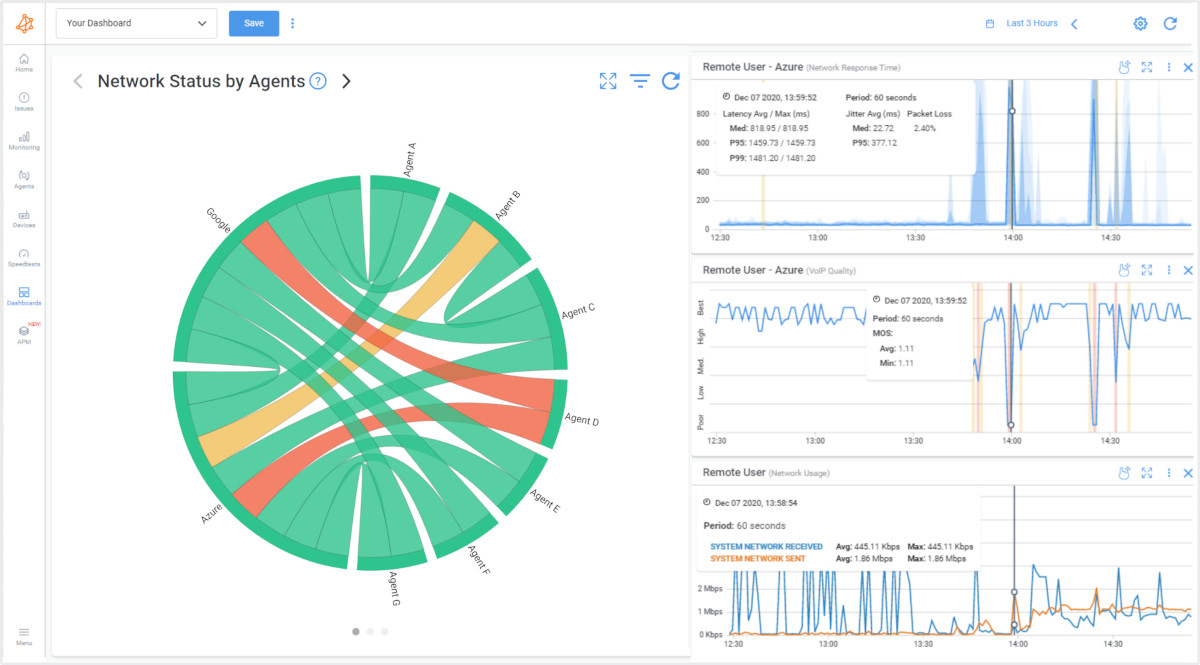
1. Network Discovery: Use network mapping tools to identify and document all devices connected to the network, including routers, switches, servers, and end-user devices.
- Utilize network scanning tools to discover active devices.
- Create a visual representation of the network topology to understand the relationships between different components.
2. Inventory and Documentation: Document details of hardware, software, and configurations to create a comprehensive inventory.
- Collect information on device specifications, including make, model, and versions.
- Maintain an updated inventory list that includes IP addresses, subnets, and VLAN configurations.
3. Performance Metrics Collection: Utilize performance monitoring tools to gather data on key metrics influencing network performance.
- Monitor bandwidth usage to identify peak usage times and potential congestion.
- Measure latency and response times to understand the overall network responsiveness.
4. Security Assessment: Evaluate the network's security posture, identifying vulnerabilities and potential risks.
- Conduct network risk assessments, vulnerability assessments and penetration testing to simulate potential cyber threats.
- Review and update security protocols, access controls, and encryption mechanisms.
5. Traffic Analysis: Analyze data traffic patterns to understand usage and identify any anomalies affecting performance.
- Use network analysis tools to examine data flow between devices.
- Identify and analyze patterns, recognizing any irregularities or unexpected traffic.
6. Identify Potential Bottlenecks: Use performance metrics to pinpoint areas of congestion or bottlenecks in the network.
- Identify devices or network segments with consistently high usage.
- Evaluate the capacity of network devices to handle current and future loads.
7. Documentation and Reporting: Compile detailed documentation and generate comprehensive reports for stakeholders.
- Document findings from each assessment aspect, including network mapping, performance metrics, security, and traffic analysis.
- Create reports highlighting key observations, identified issues, and recommendations for improvement.
8. Communicate Results: Present assessment results to key stakeholders, ensuring a clear understanding of the network's current state.
- Schedule meetings or presentations to share assessment findings.
- Engage with IT teams, executives, and relevant departments to discuss results and gather additional insights.
9. Strategic Decision-Making: Based on assessment results, make informed decisions to optimize and enhance network performance.
- Collaborate with decision-makers to align network improvements with broader business objectives.
- Prioritize actions based on the urgency and potential impact on network performance.
10. Implementation Planning: Develop a roadmap for implementing recommended changes, ensuring a structured and organized approach.
- Create a detailed plan outlining the steps needed for each improvement.
- Prioritize actions based on their importance and potential impact on overall network performance.
By following these steps, organizations can conduct a comprehensive network assessment, gaining valuable insights into the current state of their network infrastructure. This information forms the basis for strategic decision-making and actions to optimize and enhance network performance. Remember that a network assessment is not a one-time event but an ongoing process to adapt to the evolving needs of your organization.
Learn how to perform a network assessment with Obkio Network Monitoring to optimize network performance for a new service deployment or migration.
Learn more

Next, let's evaluate some KPIs. Setting benchmarks and measuring performance metrics are crucial aspects of a network assessment. They provide a network baseline for evaluating the current performance of the network, identifying areas for improvement, and ensuring optimal operation. Let's explore these concepts and list key metrics to monitor:
Setting benchmarks involves establishing performance standards or reference points against which the current network performance can be measured. Benchmarks serve as a basis for comparison, allowing organizations to gauge whether the network is meeting desired levels of efficiency and reliability.
- Define Performance Goals: Clearly articulate the performance goals for the network, considering factors like latency, bandwidth, and reliability.
- Baseline Assessment: Conduct an initial network assessment to establish a baseline for key performance metrics.
- Industry Standards and Best Practices: Refer to industry standards and best practices to understand typical benchmarks for networks similar to yours.
- Consider Specific Applications: Tailor benchmarks to specific applications critical for your organization.
Measuring network performance metrics involves actively monitoring and evaluating various aspects of network performance. This ongoing measurement helps in identifying issues, optimizing resources, and ensuring that the network meets operational requirements.
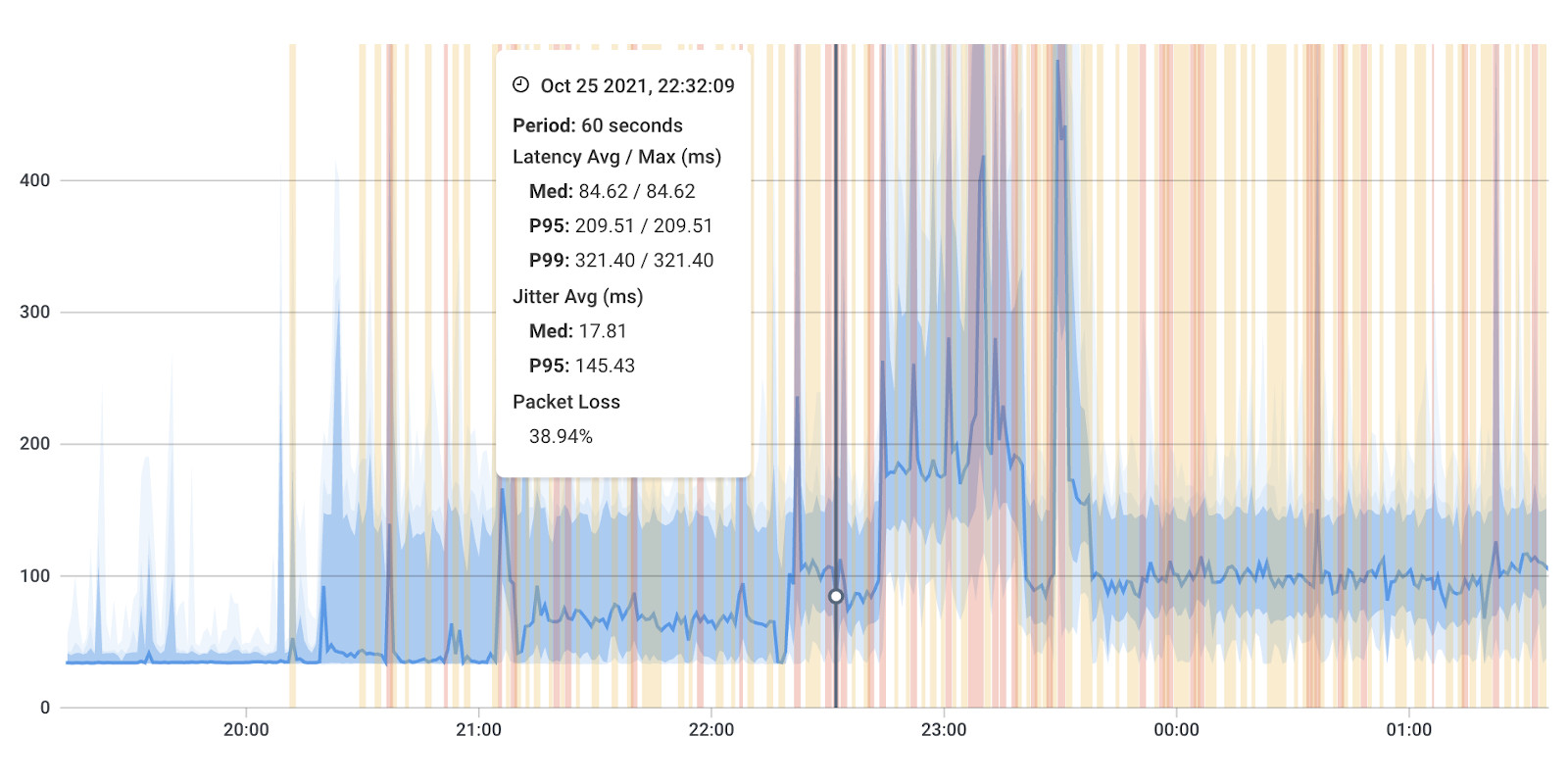
Key Metrics to Monitor:
Latency: The time delay between the transmission and reception of data. Low latency is crucial for real-time applications like video conferencing and online collaboration tools.
Bandwidth Utilization: The amount of data transmitted over the network within a given time. Monitoring bandwidth usage helps in identifying peak times, potential congestion, and ensuring sufficient capacity.
Packet Loss: The percentage of data packets lost during transmission. High packet loss can degrade the quality of communication and impact the performance of applications.
Jitter: Variation in latency or the inconsistency of packet arrival times. Jitter can affect the quality of voice and video communications. Consistency is crucial for a smooth user experience.
Network Availability: The percentage of time the network is operational and accessible. Network availability is critical for uninterrupted business operations.
Throughput: The actual amount of data transmitted successfully over the network. Throughput measures the efficiency of data transfer and helps ensure that applications perform optimally.
Error Rates: The rate of errors encountered during data transmission. Monitoring error rates helps in identifying issues that may impact data integrity and reliability.
Response Time: The time taken for a system to respond to a user's request.Fast response times contribute to a positive user experience and improved productivity.
Capacity Planning: Anticipating future network needs and planning for sufficient capacity. Capacity planning ensures that the network can handle growth in data traffic and new applications.
Security Metrics: Metrics related to network security, including the number of security incidents and the effectiveness of security measures. Monitoring security metrics helps in identifying and mitigating potential threats.
Setting benchmarks and measuring performance metrics are integral components of a network assessment, providing organizations with valuable insights into their network's health and efficiency. By understanding these metrics, organizations can proactively address issues, optimize performance, and ensure that the network aligns with business objectives. Regular monitoring and benchmarking contribute to the continuous improvement of network operations.
Identifying potential bottlenecks and weak points is a crucial step in a network assessment as it helps pinpoint areas of congestion or vulnerability that could impact overall performance. Let's delve into this step, highlighting common issues to look for and strategies for addressing identified bottlenecks:
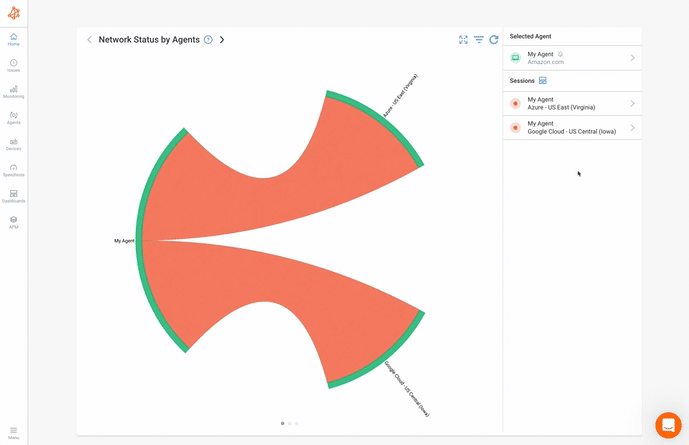
Network Congestion:
- Symptoms: Slow data transfer, delayed response times.
- Causes: High data traffic, insufficient bandwidth.
- Identification: Monitoring bandwidth utilization and traffic patterns.
Hardware Limitations:
- Symptoms: Overloaded routers or switches, high CPU/memory usage.
- Causes: Outdated hardware, insufficient capacity.
- Identification: Performance monitoring tools, device health checks.
Inefficient Routing:
- Symptoms: Suboptimal data paths, increased latency.
- Causes: Poorly configured routing tables, suboptimal paths.
- Identification: Network mapping, routing table analysis.
Software Issues:
- Symptoms: Application slowdowns, frequent crashes.
- Causes: Outdated software, compatibility issues.
- Identification: Software inventory, version checks.
Security Vulnerabilities:
- Symptoms: Unusual network activity, unauthorized access.
- Causes: Weak security protocols, unpatched vulnerabilities.
Identification: Security assessments, penetration testing.
Data Transmission Errors:
- Symptoms: Packet loss, data corruption.
- Causes: Network interference, faulty cables.
- Identification: Monitoring error rates, physical inspection.
Increased Bandwidth: Upgrade to a higher bandwidth service or implement load balancing. Enhanced data transfer speeds and reduced congestion.
Optimize Network Topology: Redesign the network topology to minimize data travel distances and improve efficiency.Streamlined data flow and reduced latency.
Upgrade Hardware: Replace outdated or underperforming hardware with newer, more powerful equipment. Improved capacity and overall network performance.
Implement Quality of Service (QoS): Prioritize network traffic based on criticality using QoS. Ensures that essential applications receive higher priority, reducing congestion for critical services.
Review and Optimize Routing Tables: Analyze and optimize routing tables for more efficient data paths. Reduces latency and ensures data takes the most optimal routes.
Software Updates and Patching: Regularly update and patch software to address security vulnerabilities and improve performance. Enhances system stability and closes potential security loopholes.
Enhance Security Measures: Strengthen security protocols, implement firewalls, and conduct regular security audits. Reduces the risk of unauthorized access and protects sensitive data.
Optimize Network Protocols: Evaluate and optimize network protocols for better efficiency. Improves data transfer speed and reduces protocol-related bottlenecks.
Investigate and Replace Faulty Hardware: Identify and replace faulty cables, switches, or other hardware components. Reduces data transmission errors and enhances overall network reliability.
Implement Caching and Content Delivery Networks (CDNs): Utilize caching mechanisms and CDNs to reduce the load on the network. Accelerates data delivery, especially for frequently accessed content.
Learn how to troubleshoot network issues by identifying where, what, why network problems occur with Network Troubleshooting tools.
Learn more

Identifying potential bottlenecks and weak points during a network assessment is a proactive approach to ensuring a resilient and high-performing network. By addressing these issues with targeted strategies, organizations can optimize their network infrastructure, improve user experience, and mitigate risks associated with performance limitations or security vulnerabilities. Regular assessments and timely interventions contribute to the continuous enhancement of network efficiency.
Once you’ve completed your network assessment, you need to organize and make sense of all the information you’ve gathered in a network assessment report. More than that, you need to make sure that your business can interpret the data and turn the information into action items.
A software like Obkio will provide you with all the data you need, right on your dashboard, with a summary of your network metrics, the results of your speed tests, and a detailed analysis of any network issues that may have been discovered.
Finally, identifying the problem is one thing, and providing solutions is another. You need to make sure that you’re turning the data into next steps that you can take to optimize network performance.
As we mentioned earlier, a Network Assessment is just one of the common network monitoring use cases that we generally encounter, along with Network Troubleshooting and Continuous Network Monitoring, which you can learn more about in our other articles!
Analysis of Findings: Thoroughly analyze the assessment results, including performance metrics, security vulnerabilities, and identified bottlenecks. Gain a comprehensive understanding of the network's current state and potential areas for improvement.
Stakeholder Consultation: Engage with key stakeholders, including IT teams, executives, and relevant departments.Discuss assessment findings, gather additional insights, and ensure alignment with organizational objectives.
Prioritization of Recommendations: Prioritize recommendations based on their impact on network performance and alignment with business goals. Focus on addressing critical issues and implementing changes that provide maximum value.
Decision-Making Framework: Establish a decision-making framework that considers technical feasibility, financial implications, and overall business strategy. Ensure that decisions are well-informed and aligned with the organization's overarching goals and constraints.
Alignment with Business Objectives: Ensure that proposed changes align with broader business objectives, such as improving user experience, supporting new applications, or enhancing security. Ensure that network improvements contribute directly to the success of the organization.
As the network assessment unfolds, the journey doesn't conclude with mere observations; it extends into the realm of strategic action. In this section, we explore the pivotal phase of making adjustments and optimizations for the migration plan. Leveraging the insights gained from the assessment results, we delve into the meticulous process of refining the migration roadmap, realigning resources, adjusting timelines, and implementing strategic changes.
The goal is not just to address identified weaknesses but to craft a resilient and future-ready network that seamlessly aligns with organizational goals.
Refinement of Migration Roadmap: Review the initial migration plan in light of assessment findings and stakeholder input. Refine the roadmap to incorporate necessary adjustments, addressing identified weaknesses and potential bottlenecks.
Resource Allocation: Allocate resources, including budget and personnel, based on the prioritized recommendations and refined migration plan. Ensure that the necessary resources are available for successful implementation.
Timeline Adjustments: Adjust the migration timeline to accommodate any changes or additions identified during the assessment. Maintain a realistic timeline that considers the complexity of changes and minimizes disruptions to regular operations.
Communication Strategy: Develop a communication strategy to inform stakeholders about the upcoming changes and improvements. Ensure transparency and manage expectations regarding the changes to be implemented.
Testing and Validation: Conduct testing and validation of proposed changes in a controlled environment before full implementation. Identify and address any unforeseen issues, ensuring a smoother transition and minimizing potential downtime.
Monitoring and Post-Implementation Evaluation: Implement continuous monitoring solutions to track the performance of the network post-implementation. Evaluate the effectiveness of implemented changes, identify any new issues, and make further optimizations as needed.
The post-assessment steps are crucial for translating assessment findings into actionable strategies. By using assessment results for strategic decision-making and making adjustments to the migration plan, organizations can ensure that the network not only meets current needs but is also well-positioned for future challenges. Regular monitoring and evaluation post-implementation contribute to the ongoing optimization of network performance.
When it comes to a network migration (like an SD-WAN migration), or new service deployment, you need to act sooner than later. During the buying process or before the service deployment, perform a network assessment to validate the end-to-end network performance and identify any current issues that may cause future complications.

Key Considerations:
Timing is Crucial: Acting sooner rather than later is paramount. Conducting a network assessment during the early phases of the migration or deployment allows organizations to address issues proactively and avoid potential complications down the line.
Validation of End-to-End Network Performance: Use the network assessment to validate the end-to-end performance of the network, ensuring that it meets the requirements of the new technology or service. This validation helps in confirming that the network is capable of supporting the intended workload and performance expectations.
Identification of Current Issues: The assessment serves as a diagnostic tool to identify existing network issues. By uncovering and addressing current issues before the migration or deployment, organizations mitigate the risk of these issues escalating and causing disruptions post-implementation.
Risk Mitigation: Address any identified weaknesses or bottlenecks to mitigate potential risks associated with the migration or service deployment. Proactive risk mitigation ensures a smoother transition and minimizes the impact on users and business operations.
Data-Driven Decision-Making: Utilize assessment results to make informed, data-driven decisions regarding the migration or deployment strategy. This approach allows organizations to align their actions with the actual state of the network, fostering a more strategic and effective implementation.
Optimization Opportunities: Identify optimization opportunities based on assessment findings to enhance the overall network performance. Optimization ensures that the network operates at peak efficiency, providing a solid foundation for the new technology or service.
In the realm of network migrations and new service deployments, a preemptive network assessment acts as a compass, guiding organizations toward a successful implementation. By validating end-to-end performance, addressing current issues, and embracing data-driven decision-making, businesses can confidently navigate the complexities of change. This use case underscores the importance of taking proactive measures, setting the stage for a resilient and high-performance network in the face of technological advancements.
Learn how to monitor SD-WAN migrations with Network Monitoring for complete visibility over your SD-WAN service, before, after & during migrations.
Learn more

Let’s say you’re an IT director that’s looking to deploy a new service for your business that relies on network connectivity to work properly.
For example, you’ve decided to migrate your business from an on-premise VoIP service to a hosted VoIP. That means that this service needs either a private connection or Internet connection to work properly.
You need to make sure the network connection is strong and reliable before your company’s new VoIP service is deployed. If there’s an issue with the network quality after the deployment, your users will be stuck dealing with problems like choppy voice quality, and VoIP lagginess, and you’ll be scrambling to solve an issue that you could have solved earlier.
You need to prepare your company’s network beforehand. Before deploying your new VoIP service, perform a network assessment to validate that the end-to-end network performance is strong and reliable enough to sustain the new service.
Testing your network performance before the service deployment will help you identify network issues with the LAN, WAN, firewalls or Internet connectivity issues which may cause major problems down the line.

Avoid any post-deployment catastrophes by quickly finding and fixing issues before the new service is deployed and the migration is completed.
For the IT team specifically, you can avoid deployment failures, which may cause problems with your executive team, as well as panic from users by delivering a successful deployment the first time.
The IT team, whether it’s the IT specialist or network administrator, is always responsible for dealing with network or application issues. So deploying a new service, or performing a migration after having performed a network assessment, avoids the flood of complaints about potential problems due to connectivity, application slowdown, and so on.
Navigating the complexities of service migration or deployment requires a strategic approach grounded in meticulous planning and execution. From early planning and stakeholder collaboration to the selection of the right tools and continuous monitoring, before we end off this article, let's go over some best practices designed to ensure a comprehensive understanding of the network's current state.
As we explore each best practice, the goal is to empower businesses with the insights needed to make informed decisions, optimize performance, and pave the way for a seamless integration of new services.
Early Planning and Preparation: Initiate the network assessment process early in the planning phase. Early assessment allows for a thorough understanding of the existing network, enabling proactive identification and resolution of potential issues.
Clearly Define Objectives and Scope: Clearly define the goals and scope of the network assessment. A well-defined scope ensures that the assessment addresses specific requirements related to the service migration or deployment.
Involve Key Stakeholders: Collaborate with key stakeholders, including IT teams, department heads, and end-users. Involving stakeholders ensures that the assessment aligns with business objectives and captures insights from various perspectives.
Choose Appropriate Assessment Tools: Select the right tools for network mapping, performance monitoring, and security analysis. The choice of tools impacts the accuracy and depth of assessment results. Ensure that tools align with the specific needs of the service migration or deployment.
Comprehensive Network Mapping: Use network mapping tools to create a visual representation of the entire network infrastructure. Comprehensive mapping helps in understanding the relationships between devices and identifying potential bottlenecks.
Thorough Hardware and Software Inventory: Document details of hardware, software, and configurations. A detailed inventory aids in understanding the capabilities and limitations of existing network components.
Performance Metrics Collection: Utilize performance monitoring tools to collect data on key metrics like bandwidth, latency, and throughput. Performance metrics provide insights into the current state of the network and help in identifying areas for improvement.
Security Assessment: Include a security assessment to identify vulnerabilities and potential risks. A robust security assessment ensures that the network is resilient against potential threats associated with service migrations or deployments.
Traffic Analysis: Analyze data traffic patterns to understand usage and potential congestion points. Traffic analysis helps in optimizing the network for the anticipated load of the new service or migration.
Regular Communication with Stakeholders: Maintain transparent and regular communication with key stakeholders throughout the assessment process. Regular updates keep stakeholders informed, manage expectations, and foster collaboration.
Documentation and Reporting: Document assessment findings comprehensively and generate detailed reports. Clear documentation facilitates informed decision-making and serves as a reference for future network management. To make sharing easier, you can also convert PDF files for consistent and professional presentation.
Iterative Assessment and Monitoring: Consider network assessment as an ongoing, iterative process. Continuous monitoring allows organizations to adapt to changing network requirements and proactively address emerging issues.
Strategic Decision-Making Based on Results: Utilize assessment results to inform strategic decisions regarding the service migration or deployment. Informed decision-making ensures that changes align with business goals and enhance overall network performance.
Post-Assessment Optimization: Implement adjustments and optimizations based on post-assessment findings. Optimization post-migration ensures that the network continues to meet performance expectations and adapts to evolving needs.
Stay Informed About Industry Trends: Keep abreast of industry trends and emerging technologies. Staying informed allows organizations to plan for future network requirements and potential technology advancements.
Adhering to these best practices provides a solid foundation for successful network assessments, especially when planning for service migrations or deployments. Each practice contributes to a holistic and proactive approach, ensuring that the network is not just ready for change but optimized for sustained performance.

In the ever-evolving landscape of IT, where network migrations and new service deployments mark transformative milestones, the key to success lies in proactive preparation. A comprehensive network assessment emerges as the compass that guides organizations through the intricacies of change, offering invaluable insights into current performance, identifying potential pitfalls, and paving the way for strategic decision-making. By leveraging the findings from these assessments, businesses not only ensure a seamless transition but also fortify their networks for the challenges of tomorrow.
Start your network assessment today with Obkio's Network Performance Monitoring software. Uncover the strengths, address the weaknesses, and chart a course toward a future-ready network. Don't leave your network's potential to chance — let data guide your path to success.
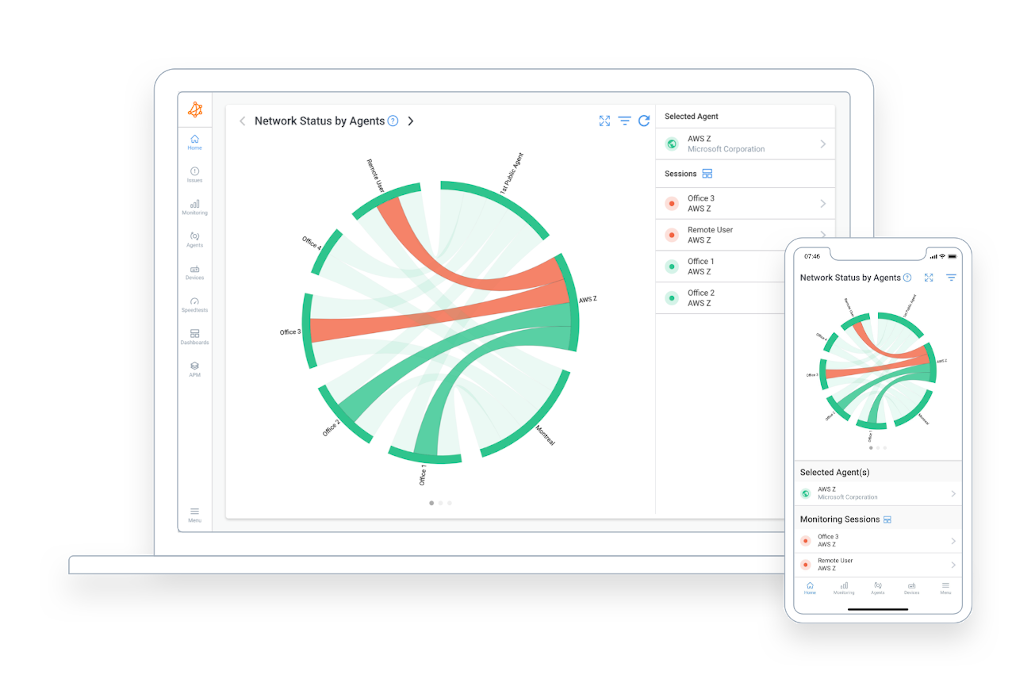
Obkio is a simple Network Performance Monitoring software for Enterprises and service providers that allows users to continuously monitor end-to-end performance of their network and core business applications to identify network issues, collect data on network performance, and improve the end-user experience!
After your network assessment, use Obkio for Network Troubleshooting of intermittent network problems, and Continuous Monitoring of network performance.
- 14-day free trial of all premium features
- Deploy in just 10 minutes
- Monitor performance in all key network locations
- Measure real-time network metrics
- Identify and troubleshoot live network problems



























 Obkio Blog
Obkio Blog





